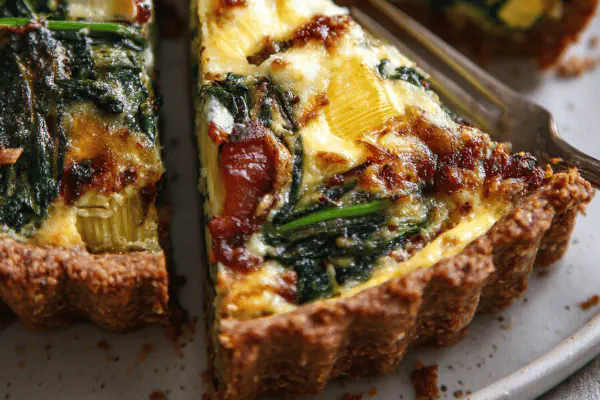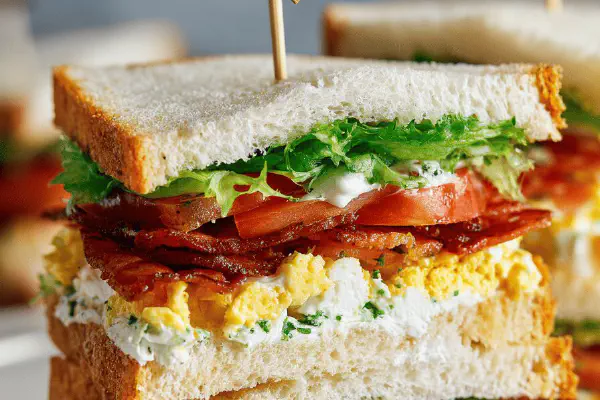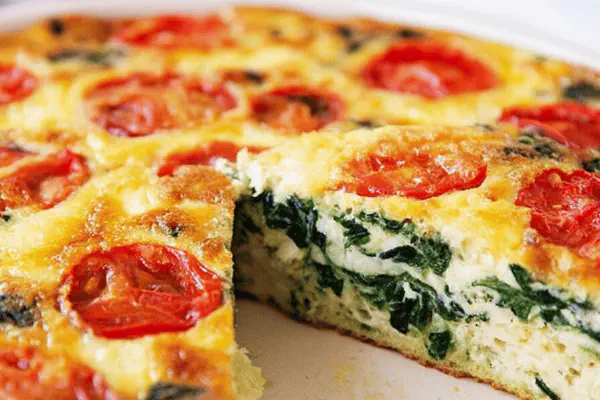Swiss Chard Bacon Quiche

E
By Emma
Certified Culinary Professional
•
Recipe tested & approved
Savory quiche featuring swiss chard, bacon, and leeks in a flaky crust. Modified with rye flour and replace wine with apple cider. Includes garlic instead of onions for earthier flavor. Reduced water in dough, added cream to custard. Time adjusted for resting and baking. Serves 6-8.
Prep:
20 min
Cook:
50 min
Total:
Servings:
6-8 servings
#quiche
#Swiss chard
#bacon
#rye flour
#brunch
Quiche with swiss chard and savory bacon. Rye flour replaces white for nuttier crust taste. Apple cider swaps for wine, adds subtle sweetness. Garlic is punchier than onion. More stems included but quantities slightly reduced. Cream instead of milk for richer custard. Dough kept slightly drier, water reduced. Resting dough longer, 40 minutes, chills better. Baking a bit longer, around 45 minutes, to account for cream custard. Firm sides hold filling better. Makes 6 to 8 slices from 9-inch tart pan. Rustic, flavorful, not too rich. Good for brunch or light dinner. Easier, slightly twisted from original. No fancy steps but attention in cooking liquids down to avoid soggy bottom. Bacon gives smoky fat. Swiss chard brings earthiness. Simple, punchy, varied texture.
Ingredients
CRUST
- 260 ml (1 cup plus 2 tbsp) rye flour
- Pinch salt
- 110 ml (7 tbsp) unsalted butter cold cubed
- 45 ml (3 tbsp) ice water approximate
FILLING
- 4 slices thick-cut bacon cut into lardons
- 1 large leek cleaned and thinly sliced white and light green parts
- 200 ml (about 3/4 cup plus 1 tbsp) chopped swiss chard stems
- 100 ml (just under 1/2 cup) apple cider
- 450 ml (1 3/4 cups) chopped swiss chard leaves
- 4 medium eggs lightly beaten
- 125 ml (1/2 cup) whole cream
- 2 cloves garlic minced
- Salt and fresh ground black pepper to taste
About the ingredients
Rye flour is denser and has stronger flavor than all-purpose, so less water needed in dough. Cold butter cubes crucial to flaky crust texture. Ice water added cautiously to prevent tough dough. Thick-cut bacon preferred for better rendered fat and chew. Leek replaces onion for mild layered aroma, garlic boosts depth. Swiss chard stems are fibrous but add interest, balance leaf softness. Apple cider takes place of white wine to bring delicate fruitiness without alcohol sharpness. Cream replaces milk for velvetier filling, richer mouthfeel. Season with salt and fresh cracked pepper after mixing eggs and cream; adjust to taste as bacon adds saltiness already. Chilling crust well improves structure and prevents shrinking in oven.
Method
CRUST
- Mix rye flour and salt in a food processor bowl. Add cold butter cubes. Pulse a few seconds until mixture looks like coarse crumbs roughly the size of peas. Slowly drizzle ice water while pulsing until the dough just comes together. It should hold but not be sticky; add more water by teaspoons if needed.
- Turn the dough onto a floured surface, form into a flat disc by hand without overworking. Dust lightly with flour and roll out to fit a 23 cm (9 inch) removable bottom tart pan with 2.5 cm (1 inch) sides. Press dough into pan, trim excess edges.
- Refrigerate crust lined pan for about 40 minutes to rest and firm.
FILLING
- Set oven rack in lower third of oven. Preheat oven to 185°C (365°F).
- Render bacon in a medium skillet over medium heat until fat is translucent and bacon starts crisping but not burnt. Remove some fat if excessive, leave approx 1 tbsp.
- Add minced garlic and sliced leek. Sauté until softened but not browned, about 4-5 minutes.
- Add swiss chard stems. Continue cooking until stems are tender, about 5 minutes more.
- Deglaze pan with apple cider, stir to lift browned bits. Let cider reduce until nearly dry.
- Stir in chopped swiss chard leaves, salt, and pepper. Cook until leaves wilt and moisture evaporates. Remove pan from heat. Allow mixture to cool briefly.
- In a mixing bowl, whisk eggs with cream. Season with salt and pepper.
- Combine egg mixture with cooled swiss chard and bacon filling, mix gently but thoroughly.
- Pour filling evenly into chilled crust shell. Smooth top.
- Bake on lower rack for about 40-45 minutes until custard is set with a light golden top. Avoid overbaking to keep filling creamy.
- Let quiche cool about 10 minutes before slicing. Serve warm or at room temperature.
Cooking tips
Pulse dough in processor just until clumps form; over-pulsing warms butter reducing flakiness. Forming dough into disc by hand avoids overworking unlike kneading. Rolling on lightly floured surface keeps dough manageable but avoid excess flour to prevent dryness. Resting dough cold tightens gluten and relaxes flour, reducing shrinkage. Sauté bacon fully for rendered fat, remove if too much to keep filling moist but not greasy. Add garlic after bacon starts crisping to prevent burning but allow flavor release. Deglazing pan with cider loosens flavorful browned bits, reduces moisture. Wilt swiss chard stems and leaves thoroughly to avoid watery filling. Whisk eggs with cream slowly for homogenous custard. Pour filling gently to avoid disturbing chilled crust. Bake on lower rack to protect base from direct heat, preventing sogginess. Check doneness with slight jiggle in center; custard firms further as it cools. Rest quiche briefly before serving for cleaner slices.
Chef's notes
- 💡 Use chilled ingredients. Cold butter cubes are vital. Keep everything cold. Prevents dough from becoming tough. Ice water, not warm. A flaky crust is achieved this way. Important for texture. Handle dough carefully. Don’t overwork it. Too much pressure and warmth kills flakiness. Relax, mix gently.
- 💡 Bacon choice matters. Thick-cut preferred. Better fat rendering. Keeps the filling richer. Always monitor bacon crispness. Remove excess fat if greasy. But don’t skimp, it adds flavor. Garlic should be added after bacon starts to brown. Prevents bitterness. Releases great flavor.
- 💡 Cider substitution works well. Apple cider instead of wine. Adds subtle sweetness. Doesn’t overpower other flavors. Use it to deglaze the pan. Scrape all those brown bits up! Important for taste depth, enhances everything. Remember to reduce cider until almost dry.
- 💡 Cook filling carefully. Swiss chard stems are fibrous, chop well. Add a bit of texture. Cook them down properly first. They need time to become tender. Don’t rush wilting chard leaves. Cook until moisture evaporates for proper filling. No one likes a soggy quiche.
- 💡 Resting is crucial. Chill the rolled out crust. At least 40 minutes in the fridge. Helps prevent shrinking while baking. Dough firms up nicely. Bake on the lower rack. Direct heat can cause sogginess. Also check for light jiggle after baking. Custard will set as it cools.
Common questions
Can I use a different crust?
Yes, any pie crust works. But rye adds flavor. Keep it flaky though. Use butter or shortening. Time management is vital. Prepare next time if needing quick options.
What's the best way to store leftovers?
Refrigerate tightly covered. Slice before storing. Enjoy within 2-3 days. Can be frozen. Wrap slices well. Thaw only what needed. Reheat carefully. Don’t overdo it in the oven.
Can I add other veggies?
Go for it! Spinach works well. Zucchini or bell peppers too. Adjust cooking time as needed. Softer veggies might need less. Keep proportions balanced. Avoid liquid-heavy options.
How do I know when it's done?
Look for a slight jiggle. Center should not be liquid. A light golden top also helps. Use a toothpick if unsure. Quiche firms up while cooling. Don’t rush slicing.



